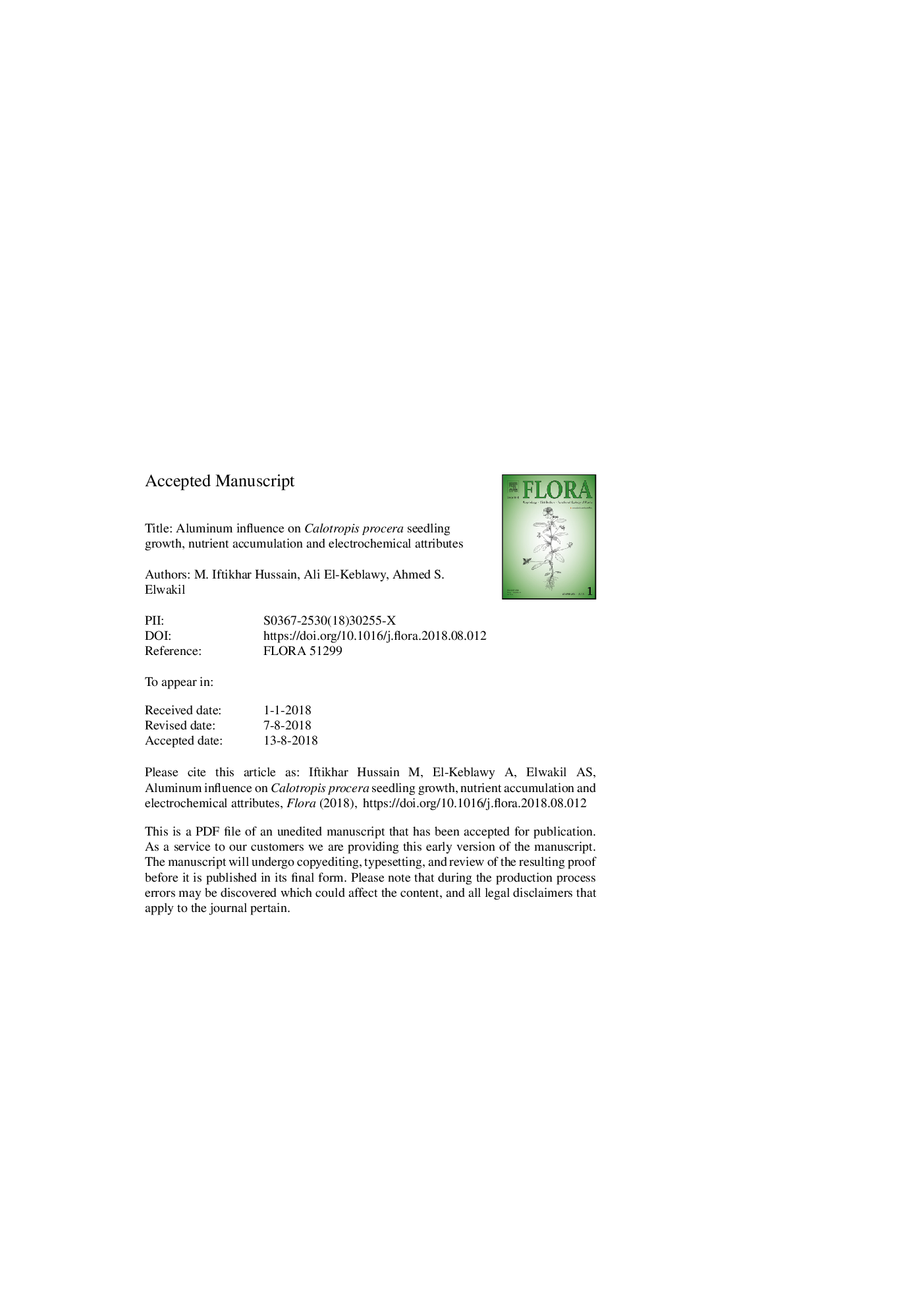| Article ID | Journal | Published Year | Pages | File Type |
|---|---|---|---|---|
| 10129282 | Flora - Morphology, Distribution, Functional Ecology of Plants | 2018 | 30 Pages |
Abstract
The effects of aluminium (Al) toxicity on Calotropis procera were investigated by exposing seedlings to nutrient solutions with concentrations of 0 (control), 15, 30, 45 and 60âmg/l respectively. Seedling growth, nutrient concentrations including Al, plant biomass and electrochemical impedance spectroscopy (EIS) were evaluated in one- month-old C. procera. Seedling growth traits (number of leaves, leaf / root length) and plant biomass (fresh and dry shoot and root weight) were significantly reduced in all Al treatments. Aluminium impaired the absorption and passage of certain nutrient elements (P), but stimulated others (Ca2+). An interesting trend was observed in the case of K+, which was observed to be increased in roots, decreased in stems and unaffected in leaves after an increase in Al concentration. Remarkable differences were also observed in Al concentration and distribution in different plant organs (roots, stems and leaves). During EIS measurements, Nyquist plots spectra (from 1âHzâ-â1âMHz) demonstrated that the complex impedance (real and imaginary) was higher in leaves than in roots. The proposed Cole-Cole model fitted well with the measured impedance spectra. The model parameters [(resistance (R), capacitance (C)] differed between roots and shoots. In general, R1 (extracellular resistance) was higher in roots than in the leaves, but the opposite was true for R2 (intracellular resistance). Al significantly increased C1 (extracellular capacitance), with the highest concentrations observed in leaves rather than roots. We conclude that biophysical measurements in roots and leaves are useful for assessing aluminium toxicity in C. procera seedlings, and that roots / leaves have the potential to be tolerant against Al toxicity.
Keywords
Related Topics
Life Sciences
Agricultural and Biological Sciences
Ecology, Evolution, Behavior and Systematics
Authors
M. Iftikhar Hussain, Ali El-Keblawy, Ahmed S. Elwakil,
